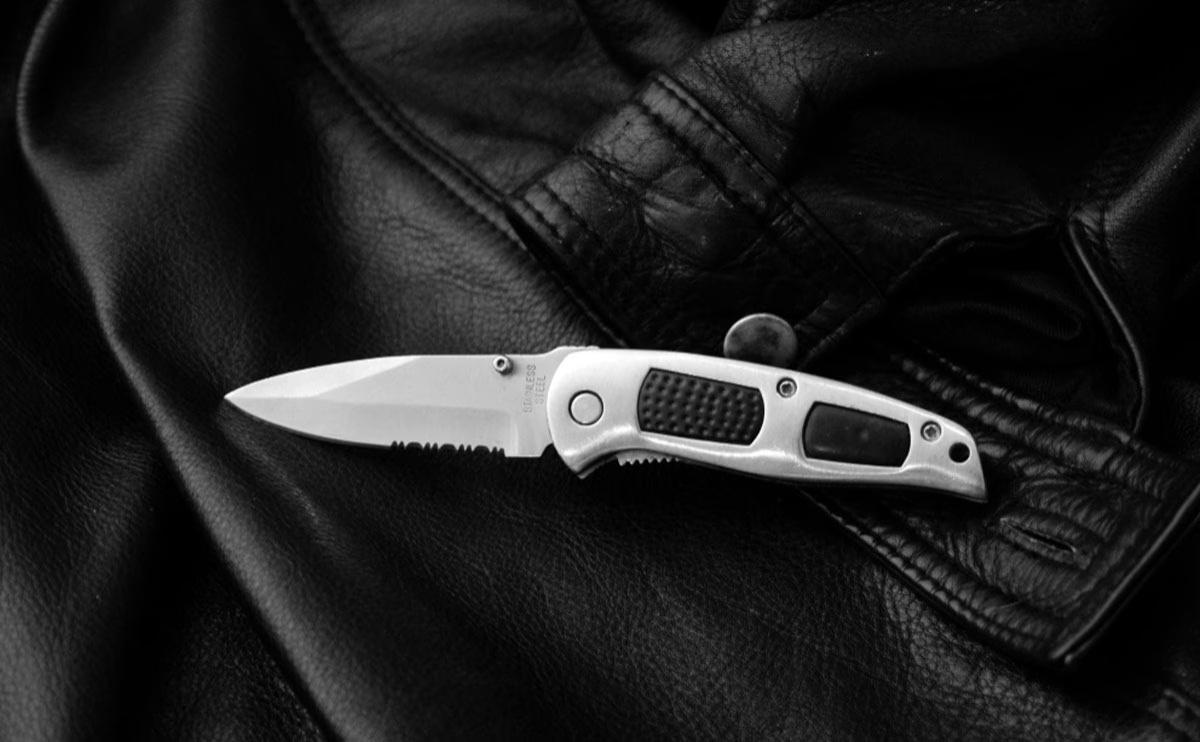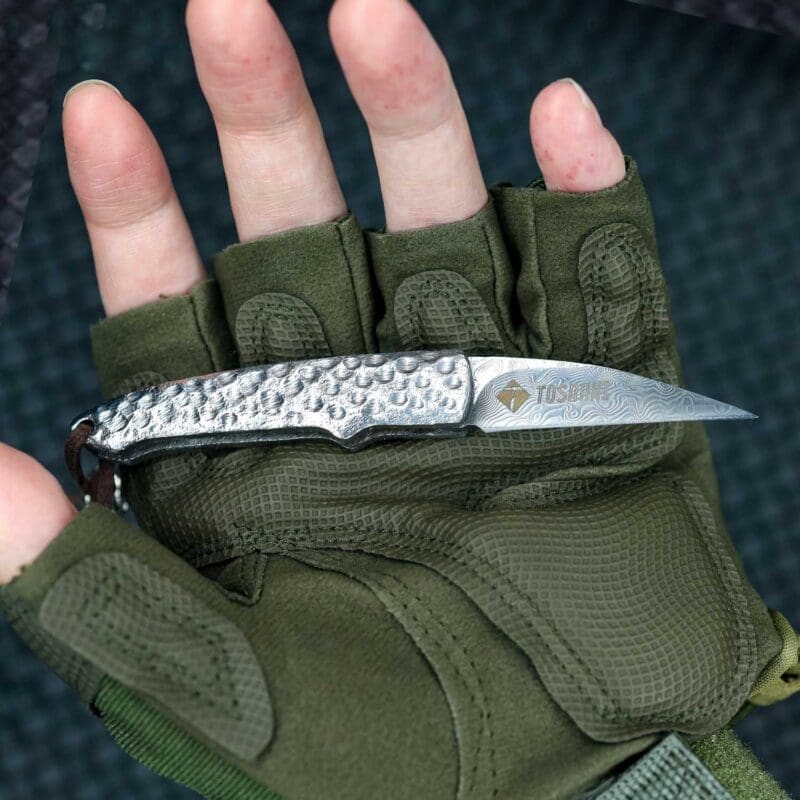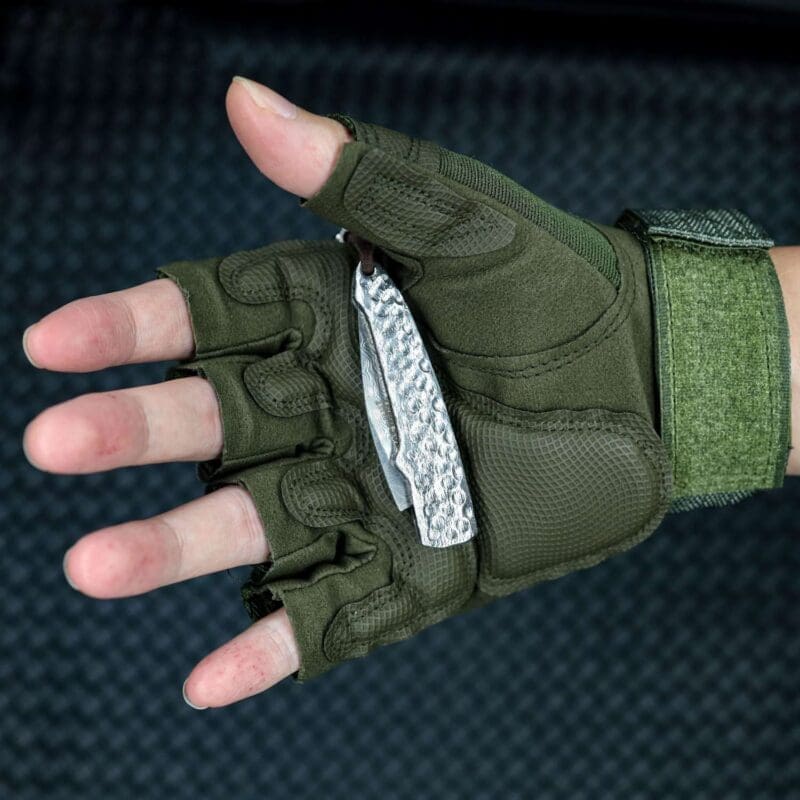How to Close a Pocket Knife Safely and Easily

A pocket knife is a handy and adaptable tool, but knowing how to close a pocket knife properly is essential for safety and effectiveness. Whether you’re using your pocket knife for everyday tasks or outdoor activities, closing it can help prevent injuries and extend the knife’s lifespan. In this detailed guide, we’ll cover everything you need to know about effectively closing a pocket knife, including various locking mechanisms and common mistakes to avoid. Let’s get started!
Table of Contents
Introduction to Pocket Knives
Definition of Pocket Knives
A pocket knife is a handy, compact, and foldable cutting tool that can easily fit in a pocket or bag. These knives usually have one or more blades that fold safely into the handle when not in use. People commonly use pocket knives for everyday tasks like cutting, opening packages, and light outdoor work. Their portability makes them essential tools for campers, hikers, survivalists, and anyone who needs a convenient blade for general purposes. The key feature of a pocket knife is its foldable design, which allows the blade(s) to retract safely into the handle when not in use. This design makes pocket knives easy to carry without the risk of accidental cuts. The handle, often made from wood, plastic, or metal, encases the blade and can be locked in place when open for added safety. Pocket knives come in various shapes, sizes, and mechanisms. Some have a single blade, while others include multiple tools like screwdrivers, bottle openers, and scissors integrated into the handle. Their compact design makes them practical for various tasks, from daily chores to emergencies.


Opening Mechanisms in Pocket Knives
Understanding pocket knives’ different opening mechanisms is essential for safety and functionality. These mechanisms affect how the blade is deployed, how quickly it opens, and how easy or difficult it is to operate. Let’s explore the three primary types of opening mechanisms: Manual, Automatic, and Assisted Opening.
Manual Opening
Manual opening mechanisms require the user to manually open the blade without assistance from springs or automatic triggers. This is the most basic and traditional form of opening a pocket knife.
How It Works:
· Thumb Studs or Thumb Holes: Many manual knives feature a thumb stud or hole on the blade that allows you to use your thumb to push the blade open.
· Slip Joint: Some manual knives, especially traditional ones, use a slip joint, which relies on a spring to hold the blade in place and allow it to fold open and close manually.
Automatic Opening
An automatic opening mechanism is one of the fastest ways to open a pocket knife. With the push of a button, the blade rapidly deploys, making it a popular choice for people who need quick access to their knives.
How It Works:
· Spring-Loaded: When you press a button (usually located on the handle), a spring mechanism inside the knife rapidly pushes the blade out of the handle and locks it into place.
Assisted Opening
An assisted opening mechanism combines the speed of automatic opening with the safety of manual operation. These knives are designed to provide a boost when opening the blade but still require some effort from the user.
How It Works:
· Spring-Assisted: When you begin to open the blade manually (usually using a thumb stud or flipper), a spring mechanism assists in pushing the blade open quickly. The spring is not strong enough to fully open the blade, so you must initiate the action.
· Flipper or Thumb Stud: The blade typically features a flipper tab or thumb stud. As you start to open the knife, the spring mechanism kicks in and helps the blade deploy.
Why Knowing How to Close a Pocket Knife Matters: Safety Concerns
Knowing how to close a pocket knife properly is crucial for ensuring safety and preventing accidents. While pocket knives are handy tools, they can also pose significant safety risks if not handled correctly. Here’s why it’s essential to focus on the proper closure of a pocket knife:
Preventing Accidental Injuries
A poorly closed pocket knife can lead to severe accidents. If the blade is not fully locked or is left partially open, it can quickly snap shut unexpectedly when you’re handling it. This can cause cuts, nicks, or more serious injuries, especially if you’re reaching into your pocket or bag and the blade inadvertently moves.
Avoiding Accidental Openings
Some pocket knives, particularly those with assisted-opening mechanisms or automatic features, are designed to open quickly with minimal effort. If the knife is not closed correctly, it may accidentally open while being carried, which can lead to cuts or other injuries if the blade is exposed.
Ensuring the knife is fully closed and locked prevents the blade from opening unexpectedly, even while it’s in your pocket or bag.
Properly closing a pocket knife is critical to ensuring your safety. Taking a few extra seconds to close the blade correctly can prevent accidents, protect yourself from injury, and avoid putting others at risk. Always check that the blade is securely locked in place and carefully handle the knife so it remains a useful and safe tool for any task.
Step-by-Step Guide to Closing a Pocket Knife
Closing a pocket knife correctly is essential to avoid accidental injuries. Let’s explore the steps in safely closing a pocket knife, including a breakdown of the different locking mechanisms.
1. Slip Joint (No Lock)
These knives rely on spring tension without a locking mechanism.
Steps:
- Ensure your fingers are clear of the blade’s path to avoid injury.
- Hold the knife handle firmly in your dominant hand.
- Using your other hand, grip the back of the blade (the dull side).
- Apply steady pressure to fold the blade back into the handle.
2. Liner Lock
A metal liner inside the handle locks the blade open.
Steps:
- Hold the knife in your dominant hand.
- Use your thumb to push the liner (located inside the handle) to the side.
- While holding the liner aside, begin folding the blade with your other hand.
- Once the blade is partially closed, release the liner and continue folding until fully closed.
3. Frame Lock
Similar to a liner lock, but the handle frame itself acts as the lock.
Steps:
- Grip the knife securely.
- Push the frame lock (part of the handle) to the side with your thumb.
- Fold the blade back into the handle carefully.
- Release the frame lock once the blade is safely tucked in.
4. Lockback
Features a locking mechanism on the spine of the handle.
Steps:
- Hold the knife with the blade facing away from you.
- Press the lock release on the back of the handle.
- While pressing the release, fold the blade into the handle.
- Ensure the blade clicks into place, indicating it’s securely closed.
5. Button Lock
A button on the handle locks and releases the blade.
Steps:
- Hold the knife so the button is accessible.
- Press and hold the button to disengage the lock.
- While holding the button, fold the blade into the handle.
- Release the button once the blade is fully closed.
Axis (Bar) Lock
Uses a sliding bar to lock the blade.
Steps:
- Hold the knife securely.
- Pull back on the bar (located near the pivot point) using your thumb and index finger.
- While holding the bar back, fold the blade into the handle.
- Release the bar once the blade is closed.
7. Compression Lock
A lock is located on the spine of the handle, near the pivot.
Steps:
- Hold the knife with the spine facing up.
- Press the compression lock (a small tab) to the side.
- While pressing the lock, fold the blade into the handle.
- Release the lock once the blade is fully closed.
Safety Tips:
- Always keep fingers clear of the blade’s path.
- Close the knife slowly and deliberately.
- Regularly clean and maintain your knife to ensure smooth operation.
For a visual demonstration, you might find this video helpful:
Common Mistakes to Avoid When Closing a Pocket Knife
Closing a pocket knife correctly is essential to prevent injury and ensure the knife functions appropriately. Several common mistakes that users make when closing their knives can be avoided, and they can significantly improve safety and efficiency.
Slipping and Injuries
One of the most common mistakes when closing a pocket knife is slipping. This can lead to cuts, scratches, or more severe injuries. Slippery or greasy hands or rushing through the closing process are significant factors in these accidents. Always focus on steady, controlled movements when closing your pocket knife to prevent this mistake.
Preventing Finger Injury While Closing
Proper technique and grip when closing a pocket knife is essential to avoid injuring your fingers. Many pocket knives come with locking mechanisms or springs that help guide the blade into place, but a lack of attention to detail can cause a finger to get caught.
Proper Grip and Hand Positioning
Ensure you properly grip and hand position when closing your knife to prevent injury. Keep your fingers clear of the blade’s path, and use your thumb to disengage the lock safely. Maintaining a firm grip on the handle is vital to avoid the knife slipping into your hand as you close it.
How to Close a Pocket Knife Without Straining Your Hand
Sometimes, closing a pocket knife can unnecessarily strain your hand or fingers, especially if the blade is stiff or you are not using the proper technique. To avoid discomfort and injury, follow these techniques for a safe and effortless closure.
Techniques for Safe Closure
· Use Both Hands: If the knife is stiff, use both hands to close it. One hand can hold the handle, while the other can guide the blade to the closed position.
· Do Not Force It: If the knife doesn’t close easily, do not force it. Apply some lubricant and gently guide the blade into place.
· Avoid Tension: Always ensure the locking mechanism is fully disengaged before closing the blade. Trying to close the knife without disengaging the lock will only lead to strain and potential damage.
The Importance of Pocket Knife Maintenance
Regular maintenance ensures that your pocket knife operates smoothly and closes appropriately. Even the best knives can become stiff, hard to close, or even unsafe to use without proper care.
Cleaning and Lubrication
The more you use your knife, the more dirt and debris accumulate in the locking mechanism and hinge area. This can cause the knife to malfunction, including difficulty in closing. Regular cleaning is necessary to maintain smooth operation. Lubricating the moving parts ensures the blade folds back easily without resistance.
How Proper Maintenance Affects Closing
Cleaning, oiling, and inspecting the blade and lock of your pocket knife can significantly improve its ease of use and ensure safe, efficient closure.
Ensuring Smooth Functionality
Proper maintenance allows the knife’s internal components, such as the locking mechanism and pivot points, to work smoothly. If these components are clogged with dirt or dried out, they can cause the blade to stick or even malfunction. Regular cleaning and lubrication help maintain smooth functionality, making it easier to close the knife safely.
FAQs
1. What is the safest way to close a pocket knife?
The safest way to close a pocket knife is to ensure that the blade is fully folded back into the handle and that the locking mechanism is engaged correctly. Always check that the blade is secure before handling.
2. Can I close a pocket knife with one hand?
Yes, many pocket knives are designed with mechanisms that allow for one-handed opening and closing. However, you should always ensure the knife is securely locked before use.
3. Why won’t my pocket knife close correctly?
If your knife is difficult to close, it could be due to dirt, debris, or a malfunctioning lock. Clean the blade and locking mechanism and lubricate the knife to restore smooth operation.
4. Is it dangerous to leave a pocket knife open?
Leaving a pocket knife open can be dangerous, as it increases the risk of accidental cuts or injuries. Always ensure the knife is properly closed and locked when not in use.
5. How can I maintain my pocket knife for better closure?
Regular maintenance is key. To maintain smooth opening and closing, clean your knife frequently, lubricate the moving parts, and ensure that the locking mechanisms are functioning properly.
6. Can a pocket knife’s lock mechanism wear out?
Yes, the lock mechanism can wear out over time, especially with frequent use. It may be time to repair or replace the mechanism if you notice difficulty closing the knife or the blade isn’t locking securely.
Conclusion
In conclusion, mastering how to close a pocket knife safely and efficiently is vital for both your safety and the longevity of your tool. By following proper techniques, regularly maintaining your knife, and using knives with secure locking mechanisms, you can ensure that your pocket knife remains reliable for all your needs. Always prioritize safety, and remember that a well-maintained pocket knife is a tool that will serve you well for years.
